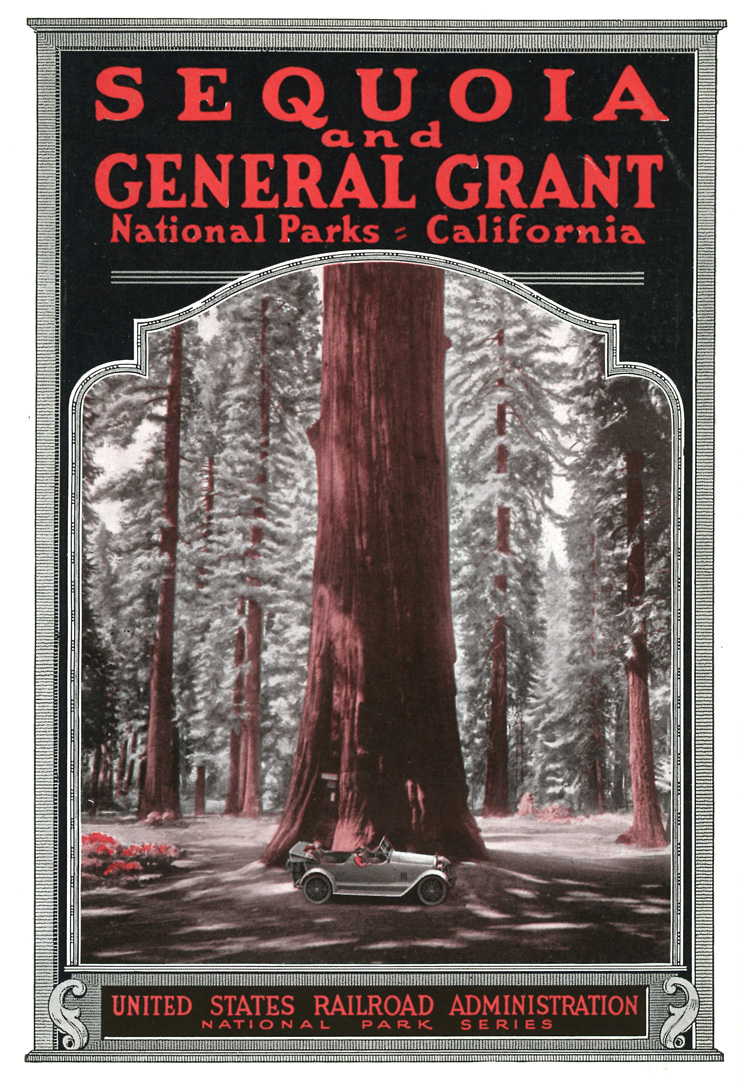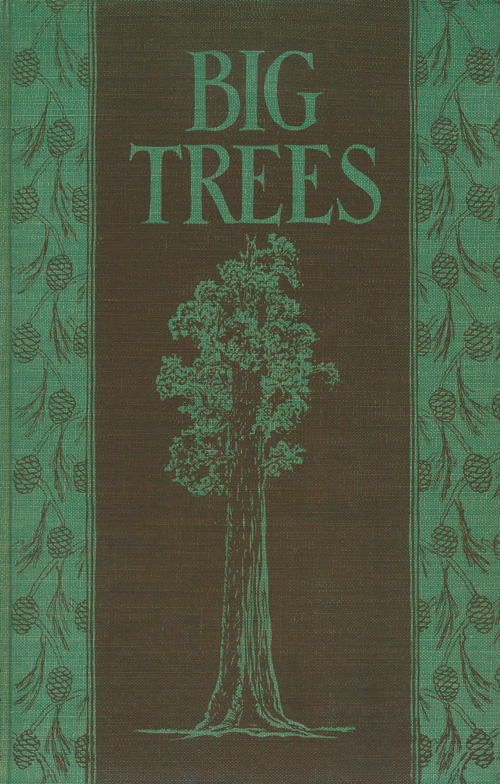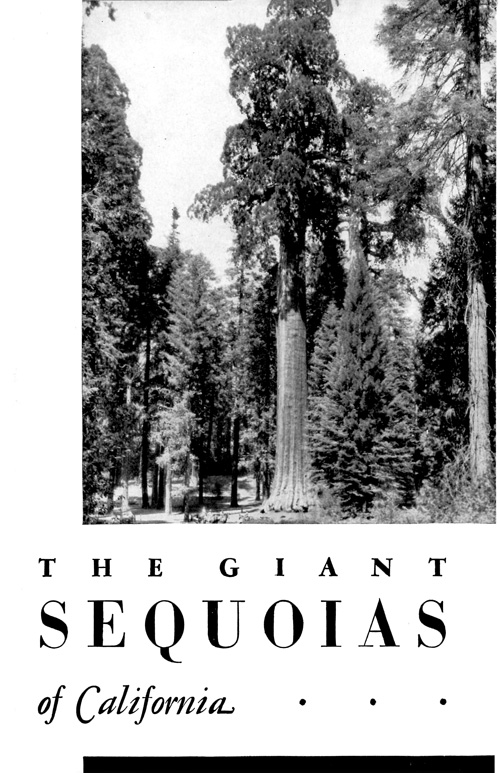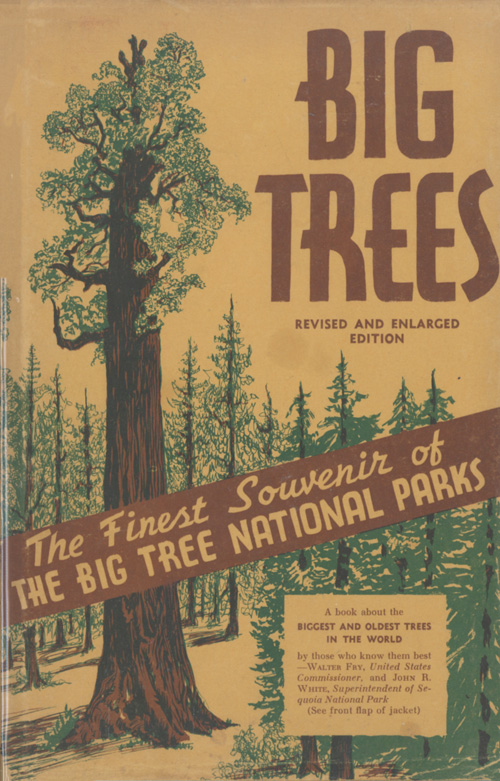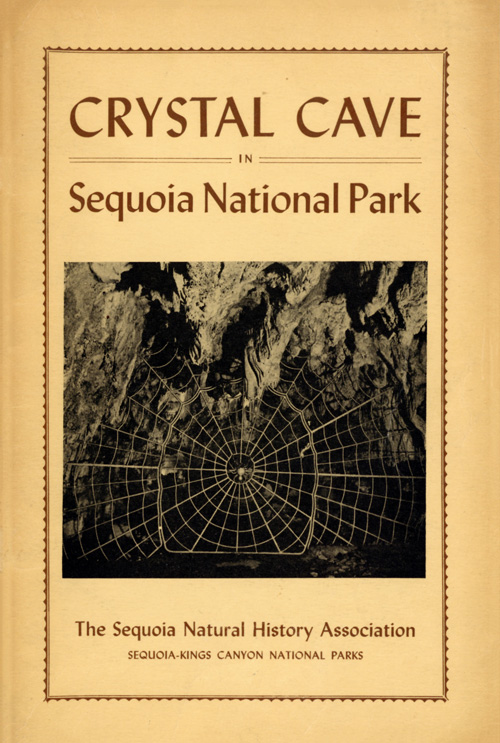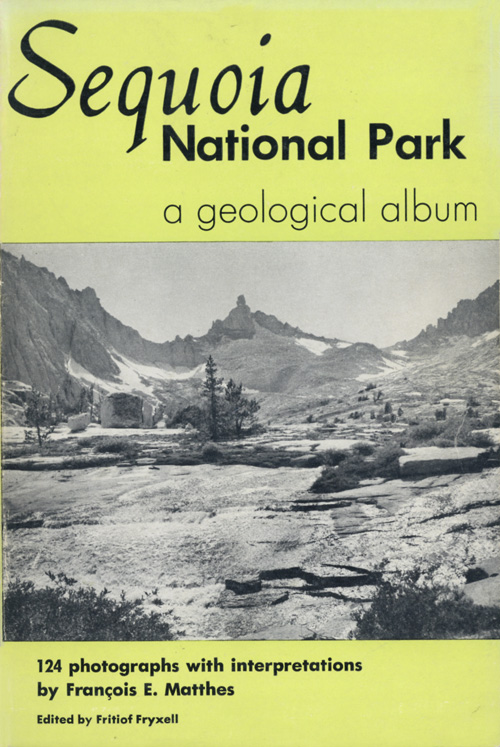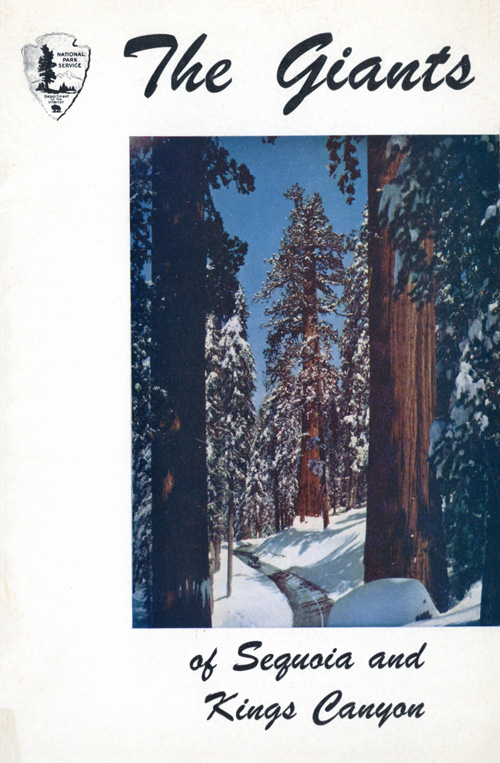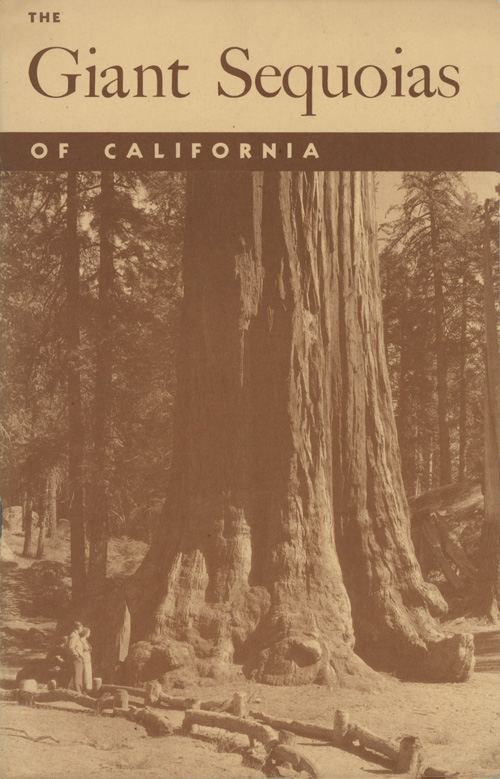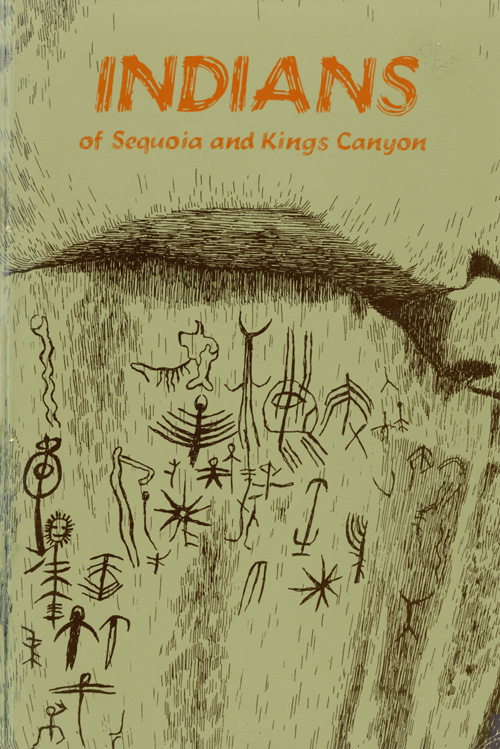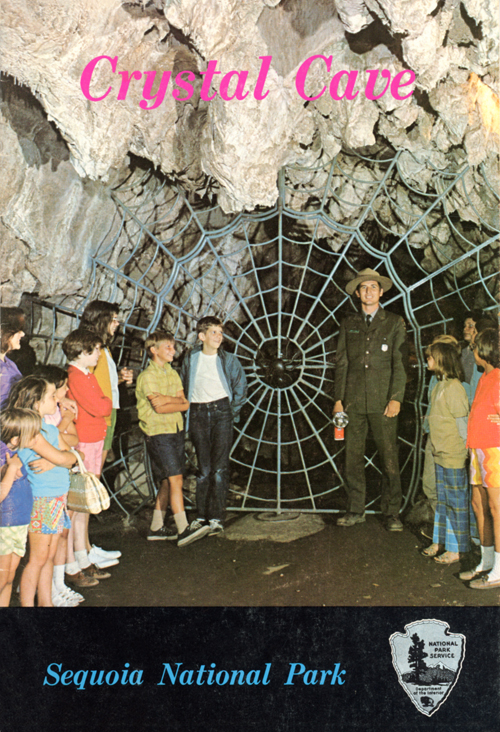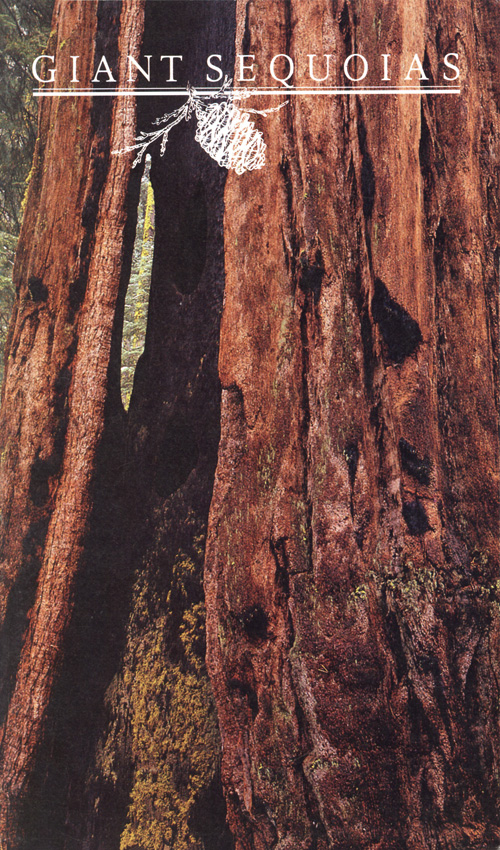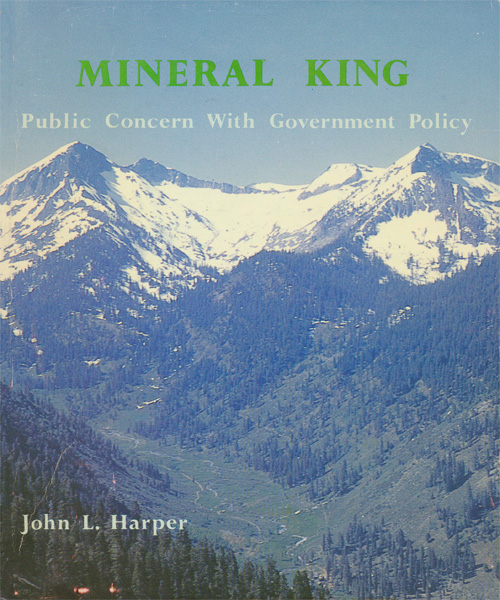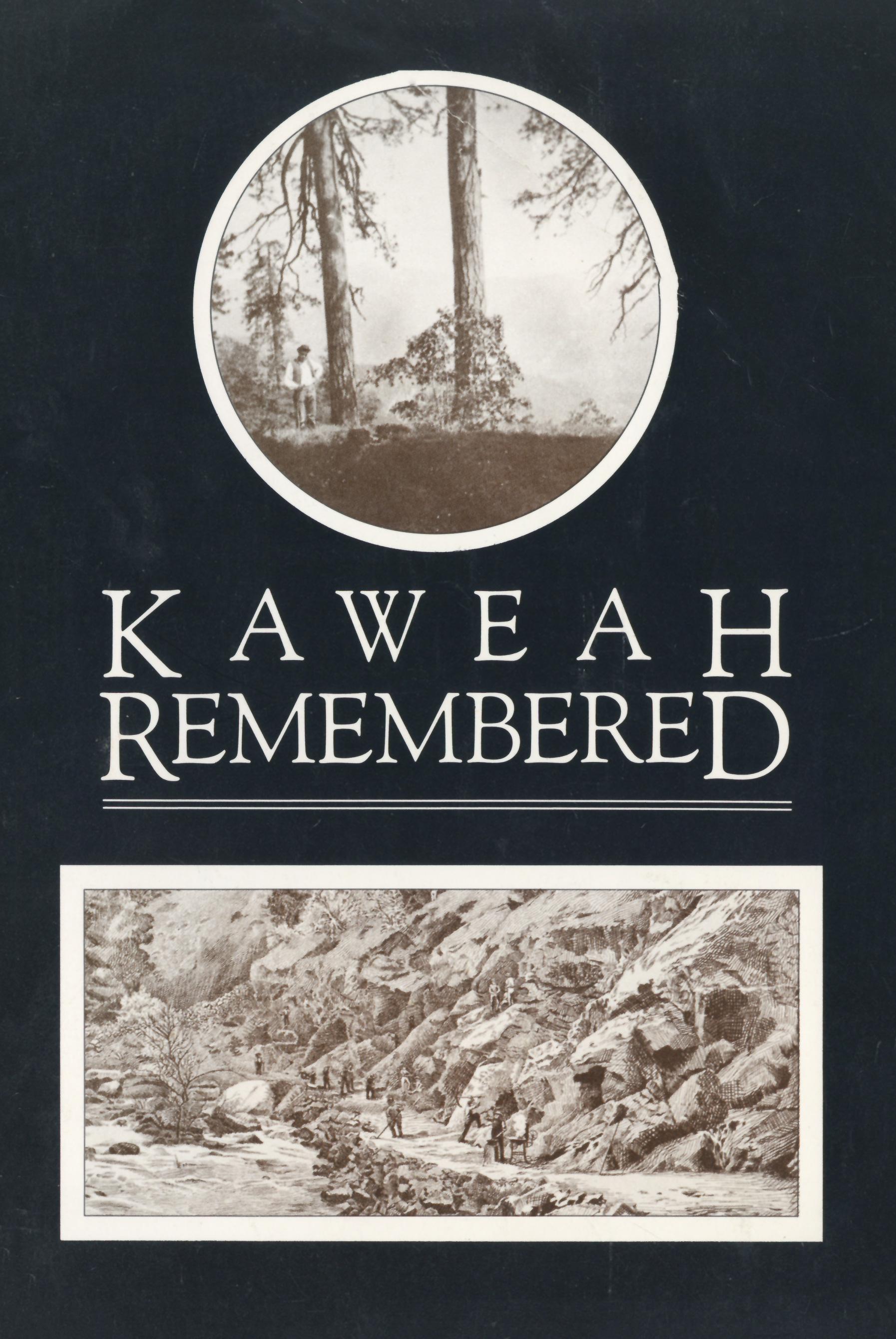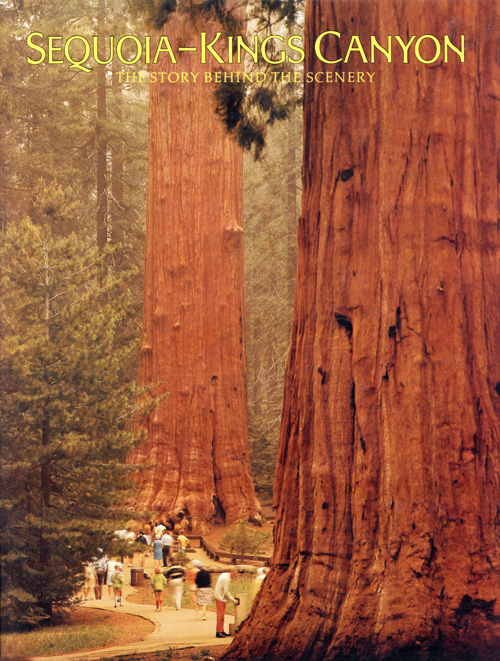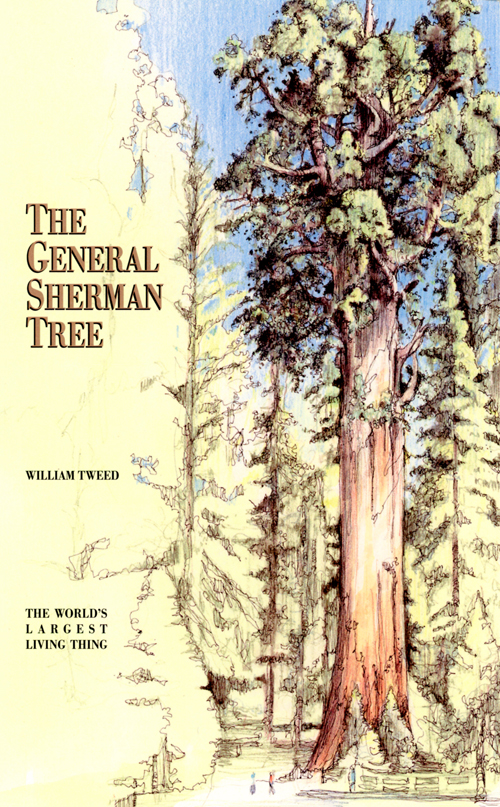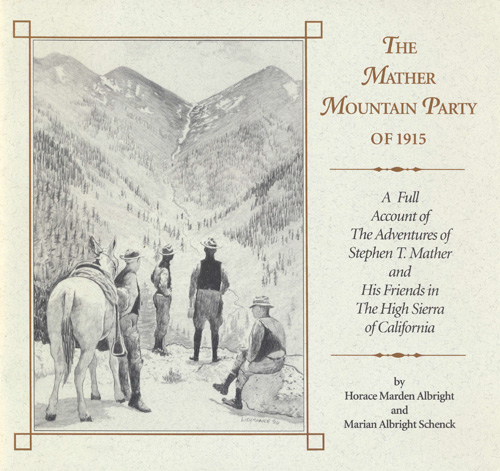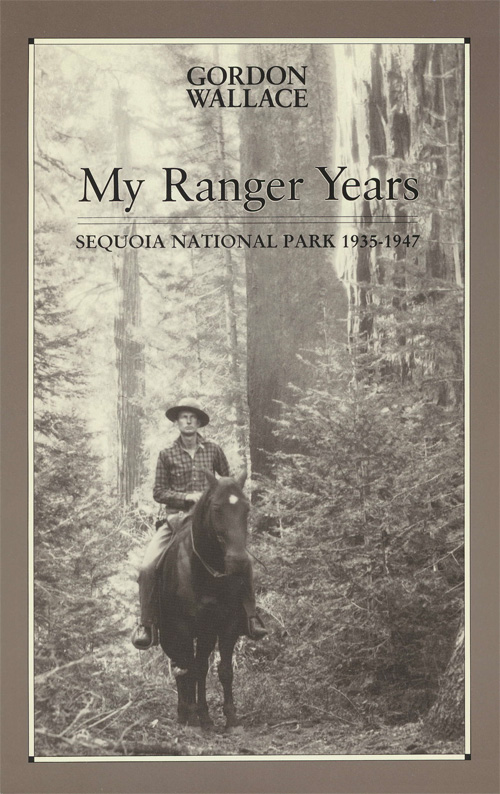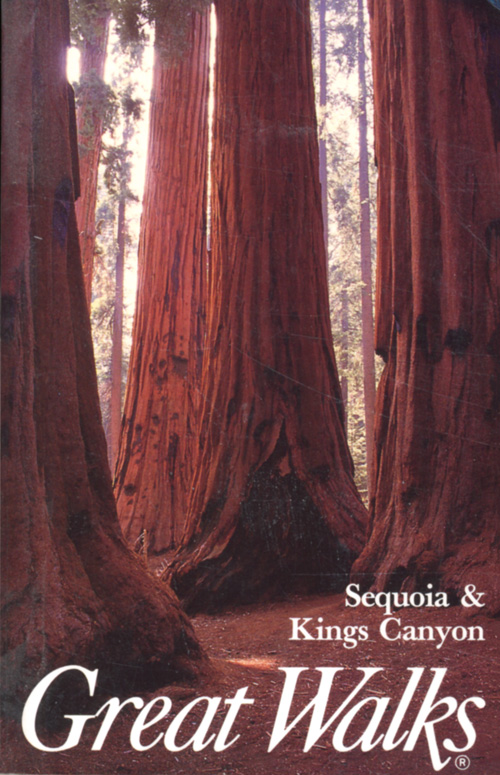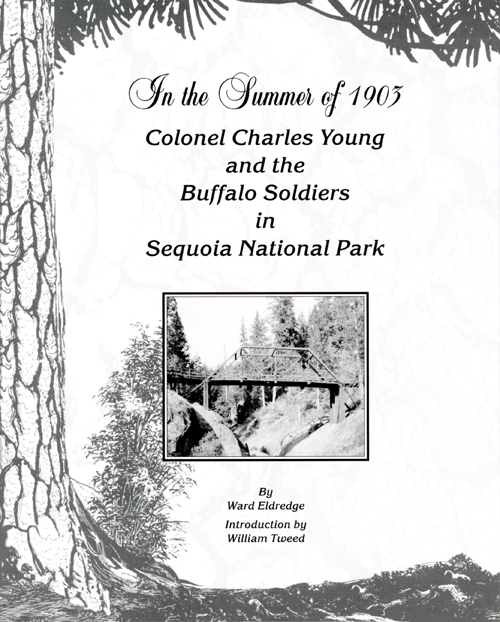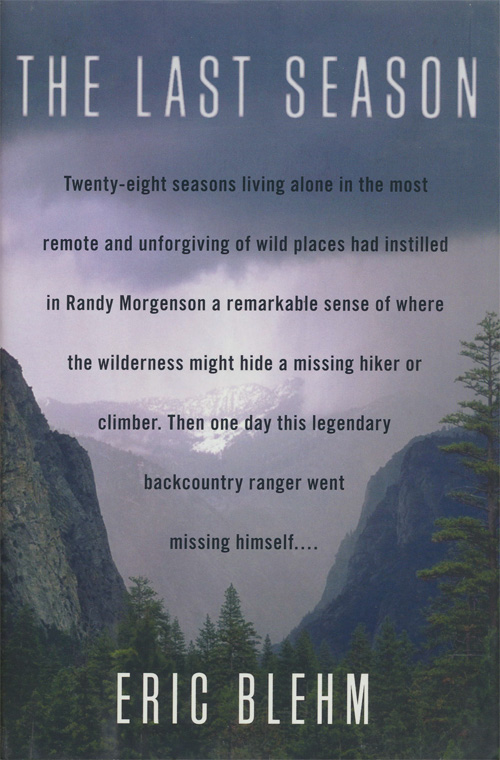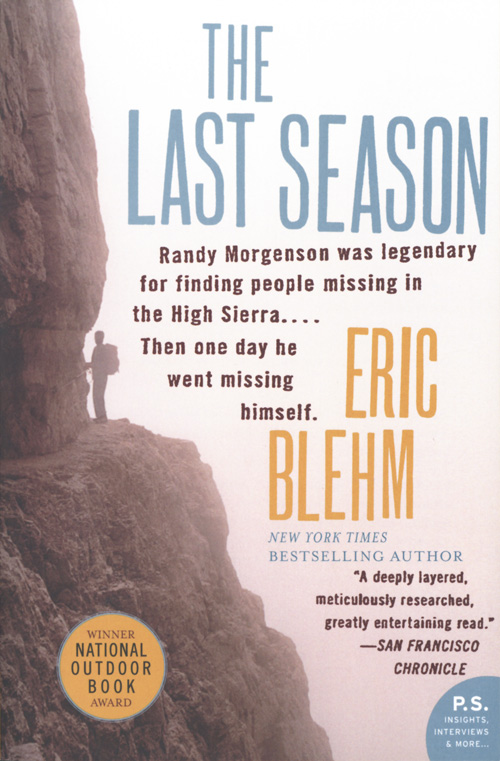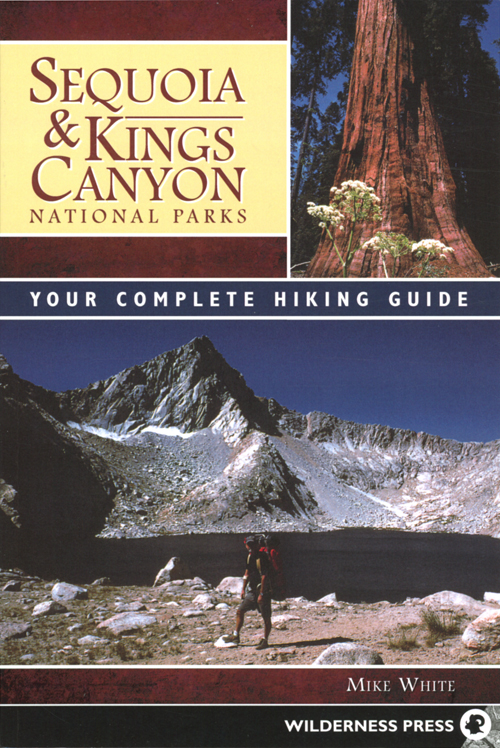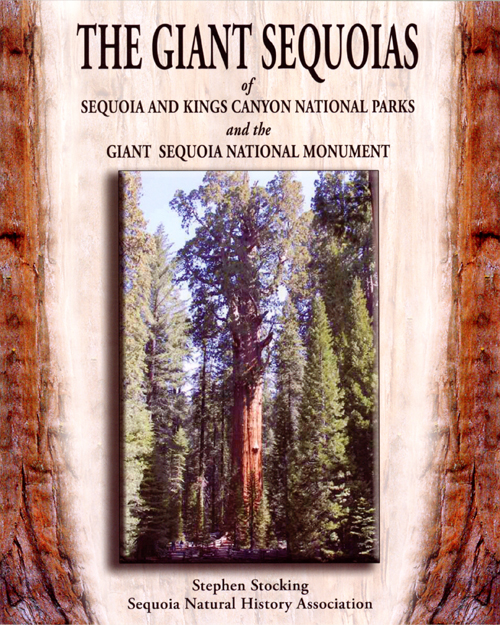|
Sequoia & Kings Canyon National Parks California |
 |
 NPS photo | |
From atop Moro Rock you can grasp the many superlatives that brought Sequoia—and eventually Kings Canyon—into the National Park System so early that Sequoia is now our second-oldest national park. To the north lies the Giant Forest where sequoias rise above their forest neighbors. In this cathedral-like grove stands the 275-foot-tall General Sherman Tree. Its trunk weighs an estimated 1,385 tons and its circumference at the ground is nearly 103 feet. To the west are the dry but diverse foothills with their oak trees and chaparral brush descending toward the San Joaquin Valley. To the south, and down over 5,000 vertical feet, the Middle Fork of the Kaweah River threads its rugged canyon. To the east, snowcapped peaks up to 13,802 feet tall are visible. Just out of sight the highest mountain in the contiguous 48 states. Mount Whitney, reaches 14,500 feet. Big trees, high peaks, deep canyons, and extensive wilderness, all in North America's longest single continuous mountain range: these superlatives abound amidst glorious scenery. Pioneering conservationist John Muir explored and named the Giant Forest. "When I entered this sublime wilderness the day was nearly done," he observed, "the trees with rosy, glowing countenances seemed to be hushed and thoughtful, as if waiting in conscious religious dependence on the sun, and one naturally walked softly and awestricken among them." May you follow in Muir's footsteps.
Earth's Largest Tree
In volume of total wood the giant sequoia is Earth's largest living tree. Its nearly conical trunk—which remains thick high into the branches—shows why. At least one tree species lives longer, one has a greater diameter, three grow taller, but none is larger. In all the world, sequoias grow naturally only on the west slope of the Sierra Nevada, usually between 5,000 and 7,000 feet of elevation. There are some 75 groves in all. The General Sherman Tree is estimated to be 2,200 years old. Its largest branch is almost seven feet in diameter. Every year the General Sherman grows enough new wood to produce a 60-foot-tall tree of usual size.
The General Sherman Tree, the world's largest living tree, is in Giant Forest, Sequoia National Park. The General Grant, the Nation's Christmas Tree and a national shrine, is in Grant Grove, Kings Canyon National Park.
The tallest trees in the world grow within a mile of one another on Redwood Creek along California's northern coast in Redwood National Park.
"Most of the Sierra trees die of disease, fungi, etc.," John Muir wrote, "but nothing hurts the Big Tree. Barring accidents, it seems to be immortal." Muir was partly right. Chemicals in the wood and bark provide resistance to insects and fungi, and thick bark insulates them from most fire. The main cause of sequoia deaths is toppling. They have a shallow root system with no taproot. Soil moisture, root damage, and strong winds can lead to toppling.
Sequoia, America's Second Oldest National Park
San Joaquin Valley residents and others urged Congress to protect Sierra tracts
from logging in the 1880s. Some park proponents sought to protect water supplies
for irrigation; others, the Big Trees. Preserving land for scenic and
recreational values was an infant idea then.
Sequoia National Park was created on September 25, 1890. Congress tripled its size a week later and created General Grant National Park to protect Grant Grove. A Sierra Forest Reserve protected more lands in 1893, and in 1926 Kern Canyon was added to Sequoia. In 1940 General Grant merged with the new Kings Canyon National Park. In 1978 Mineral King was added to Sequoia. Since 1943 Sequoia and Kings Canyon have been managed jointly.
John Muir
Conservationist John Muir's response to logging the giant sequoias was: "As well
sell the rain clouds and the snow and the rivers to be cut up and carried away,
if that were possible." Muir explored and named the Giant Forest, site of four
of the world's five largest trees. He pioneered Mount Whitney's steep east face.
And he proved the geologic role of Sierran glaciers, a new theory then that was
disputed by the California state geologist, Josiah D. Whitney.
Sequoia and Redwood Compared
The giant sequoia has a massive trunk, huge stout branches, and cinnamon-colored
bark. Also called "Sierra redwood" and "Big Tree," its scientific name is
Sequoiadendron giganteum. The taller and more slender coast redwood,
Sequoia sempervirens, is more conifer-like in profile.
Sequoias grow naturally only on the west slope of California's Sierra Nevada range. Redwoods grow naturally only in a narrow strip along the Pacific Coast.
Redwood Facts Sequoia Facts
Age: to 2,000 years
Weight: to 1.6 million lbs.
Bark: to 12 inches thick
Branches: to 5 feet diameter
Bases: to 22 feet diameter
Reproduce: by seed or sprout
Seed size: like tomato seeds
Cone size: like a large olive
Age: to 3,200 years
Weight: to 2.7 million lbs.
Bark: to 31 inches thick
Branches: to 8 feet diameter
Bases: to 40 feet diameter
Reproduce: by seed only
Seed size: like oat flakes
Cone size: like chickens' eggs
Giant Sequoia Ecology
Sequoias don't die of old age and are resistant to fire and insect damage. Most
die by falling over. These huge trees sprout from seeds as small and light as
oat flakes. Mature trees may yearly produce 2,000 egg-sized cones—bearing
400,000 seeds dispersed only as cones open. Cones hang on trees, green and
closed, up to 20 years. Douglas squirrels or larvae of a cone-boring beetle may
make a few cones open, but fire is the key to seed dispersal and seedbed
fertility. It makes the cones dry, open, and drop seeds. It lets sunlight in and
burns logs and branches on the forest floor to ashes as fertilizer.
Deep Canyons and High Peaks
These parks encompass the most rugged portions of the Sierra Nevada. From the highest peaks in the lower 48 states, ice age glaciers descended to carve some of the country's deepest canyons. In their upper reaches these gorges show the U-shaped profile characteristic of glacial gouging. At lower elevations they resume the V shape of water-carved canyons. In Sequoia the Generals Highway climbs the stream-cut walls of the Kaweah canyon. Kings Canyon Scenic Byway passes through both geologic profiles; where it ends, you can stand on canyon floor scoured flat by glaciers and stare up at canyon walls rising thousands of feet.
Extreme elevation range—from 1,500 to 14,500 feet—creates a great variety of habitats. Plants and animals inhabit life zones here that range from desert heat to arctic cold. This rich diversity stands as one of the values Sequoia and Kings Canyon National Parks preserve for the world. They also preserve iconic Sierran wildlands. Congress designated over 93 percent of these parks as wilderness, adding another layer of protection.
The Snowy, Sawtoothed Mountain Range
Over 400 miles long and 60 to 80 miles wide, the Sierra Nevada is larger than
the entire Alps area—French, Swiss, and Italian combined. Palisade Crest in
Kings Canyon National Park and the Mount Whitney group in Sequoia each boast six
peaks over 14,000 feet of elevation.
No roads cross the range here; intimate appreciation of the mountains' scale and grandeur is hard-won afoot or with packstock. Panoramic vistas are seen from atop Moro Rock, at roadside pullouts along the Generals Highway; at Panoramic Point near Grant Grove; and at roadside pullouts before Kings Canyon Scenic Byway descends into the canyon. The Mineral King valley provides superlative hiking access to meadows, alpine lakes, and Sierra peaks.
Park roads top out at 7,800 feet of elevation, so most people visiting the parks do not experience the alpine country. Above 9,000 feet tall trees or dense forests cannot survive the harsh climate. Above about 11,000 feet, no trees grow. Here are mostly boulders, rocks, and gravel punctuated with small alpine lakes, meadows, and low-growing shrubs. Summer flourishes but briefly. Preparing for winter, the marmot stores body fat; the pika stores small piles of hay. Mountain lakes dot Sierran wilderness, many set in cirques, bowl-shaped niches carved into rock by glaciers.
Sierran Wildlife
Mule deer are prime prey of elusive mountain lions.
Pine martens, fishers, and wolverines pursue squirrels
and other small animals. Black bears may take
fawns or eat carrion but mostly eat vegetation.
Marmots and pikas live in mountains. Coyotes, gray
foxes, bobcats, and ringtails patrol the foothills.
Decades of planting non-native brook, brown, and other trout displaced the native rainbow and Little Kern golden trout. These planted fish also ravaged amphibian populations, especially frogs.
Profile of the Sierra
Phenomenal changes in topographic relief characterize these parks.
Foothills Chaparral
Dry, hot summers in the Sierra's western foothills give rise to chaparral, a
drought-resistant shrub community adapted to periodic fire.
Winter rains bring wildflower bursts in spring before grasslands and chaparral go brown for summer and fall.
The Giant Sequoia Belt
The world's 75 giant sequoia groves grow on moist, unglaciated ridges on the
Sierra's west slope, between 5,000 and 7,000 feet of elevation. Only eight
groves lie north of Kings River—scattered over nearly 200 miles. The rest
occur south of the river at intervals of 4.5 miles or less in a 60-mile-long
belt. This Big Tree's range had shrunk to this area by about 2.5 million years
ago when climates became drier. Some 60 million years ago its ancestral species
ranged more widely. Visually dominant in their groves, sequoias are part of the
mixed-conifer forest that includes white fir, sugar pine, yellow pine, and
incense-cedar. The largest remaining sequoia groves are at Redwood Mountain in
Kings Canyon National Park and at Giant Forest in Sequoia National Park. Redwood
Mountain grove covers 3,100 acres and has 15,800 sequoia trees over one foot in
diameter at their bases.
The Giant Forest covers 1,800 acres, with 8,400 such trees. Some 36,500 acres of sequoia groves remain in the Sierra. Most are under federal or state protection.
Elevation and Precipitation
The Sierra Nevada forces moist, eastbound air upwards. As it rises the air is
cooled and forced to release its moisture as precipitation. Drought-resistant
chaparral covers lower west slope elevations. Gargantuan sequoia/mixed-conifer
forests cover middle elevations. Air masses crest the mountains mostly depleted
of moisture. East of the Sierra Nevada, in its rainshadow, lies the semi-arid
Great Basin. On the Sierra's west slope precipitation generally increases until
it reaches a maximum between 5,000 and 8,000 feet of elevation. This zone of
maximum precipitation includes the sequoia belt and its luxuriant forest
development. Above these elevations precipitation tends to decrease.
Mount Whitney
Mount Whitney crowns the Sierra Nevada—the highest point in the contiguous
United States. Named for California state geologist Josiah Dwight Whitney in
1864, it is visible from the west only from remote backcountry. Visitors to the
Owens Valley east of the park see it from US 395 near Lone Pine.
Moro Rock
Moro Rock is a dome-shaped granite monolith. Common in the Sierra Nevada, these
domes form by exfoliation, the scales, plates, or sheets of rock layers on
otherwise unjointed granite. Outward expansion of the granite causes the
exfoliation. Expansion results from load relief: when the overburden that once
capped the granite has eroded away, the source of compression is removed, and
the granite slowly expands. Fractures that form during exfoliation tend to cut
corners. This ultimately results in rounded, dome-like forms. Moro Rock parking
area is 1.5 miles from Giant Forest Museum. A 0.25-mile trail climbs 300
vertical feet between the parking area and Moro Rock's summit (elevation 6,725
feet), a strenuous hike.
Visiting the Parks
 (click for larger map) |
Getting Here Vehicle access is by CA 180 into Kings Canyon or CA 198 into Sequoia. The Generals Highway connects both, making loop trips possible. Vehicles longer than 22 feet are not advised between Potwisha and Giant Forest Museum in Sequoia Park; CA 180 has fewer curves. There is no road access from US 395 east of the parks. Air, bus, Amtrak, and rental cars are available in Fresno and Visalia. Visalia offers a park shuttle in summer. Gasoline is not available within the parks.
Activities Check bulletin boards for schedules of ranger-led walks and talks.
Crystal Cave This cool, beautiful cavern is open in summer only. Buy tickets for tours only at Lodgepole and Foothills visitor centers—not at the cave.
Food and Lodging For reservations in Kings Canyon year-round, call 559-335-5500. Wuksachi Lodge is open year-round in Sequoia; call 888-252-5757. Grant Grove and Wuksachi offer food service year-round; Cedar Grove and Lodgepole in summer. Nearby towns offer food and lodging.
Camping Campground locations range from the warm foothills to cool forest settings; some are open all year. For summer you can reserve standard sites at Lodgepole and Dorst Creek only, and large-group sites in other areas. Visit www.recreation.gov. Lodgepole, Grant Grove, and Atwell Mill campgrounds are close to sequoias.
Protect the Past Archeological sites and artifacts and all park features are protected by law. If you find artifacts or see evidence of collecting, please notify the park.
Trails Day-hikes are available in all areas. Always use trail maps. Motorbikes, mountain bikes, and pets are not permitted on any park trail.
Bears Black bears are attracted by human food and can cause severe property damage trying to get it. If they succeed they may get aggressive and must be killed, so proper food storage is required at all times. Keep all food and odorous items in the metal boxes provided. Lodge guests must bring all items indoors. Keep a clean camp; put all garbage in bear-proof containers. If a bear approaches, scare it away; make loud noises and throw pebbles, but keep a safe distance and use good judgment. There are no grizzly bears in these parks.
Please don't feed any wildlife. Let them live in natural conditions—for their good and your safety. Rodents here can have fleas carrying plague. Don't try to touch animals. Pets must be leashed at all times.
Wilderness permits (fee charged in summer) are required for all overnight wilderness trips. Permits can be reserved. Fax or mail requests no earlier than March 1 and no later than two weeks before the start of your trip. Some first-come, first-served permits are available after 1 pm on the day before departure. Be prepared to be fully self-reliant. Ask for specific regulations on use of horses, burros, and llamas.
Natural Hazards Expect the unexpected: falling trees, slippery surfaces, rolling rocks, cliffs, fast rivers, biting insects, and wild animals. You are responsible for your own safety. Seek first aid at visitor centers. In an emergency call 911 from any park phone; no coins needed.
Park roads are steep, narrow, and winding. Downshift even in automatics to prevent a burned-out transmission going uphill and burned-out brakes downhill. Pull into a safe turnout to look at scenery. Slow-moving vehicles must pull over to let others pass. Seatbelts are required by law. Motorcyclists: watch for oil buildup on roads.
Rattlesnakes are common in the parks. Always be sure you can see where you step or reach.
Rivers are treacherous all year, and especially in spring and early summer's cold, high water. Be alert for undercut banks and slippery rocks. Many victims fall in by accident. Strong currents may be invisible below the surface. Don't swim above waterfalls or in swift water. Keep children in sight at all times.
Giardia lamblia is a protozoan in natural water in the parks. Boil surface water three minutes before drinking.
If you camp or hike in the foothills, check clothes often for ticks. They can carry Lyme disease. Get information on removal and bites at visitor centers.
Cougars live here. Avoid hiking or running alone. Watch children closely. If you encounter a cougar, don't run or crouch down. Stand your ground or back off slowly. Pick up small children. Wave, shout, and throw stones. If attacked, fight back.
Lightning Danger When a thunderstorm threatens, get in a vehicle or large building. Don't stand under a lone tree. Avoid open areas and water and high places like Moro Rock. If your hair stands on end, drop to your knees and bend forward with your hands on your knees. Do not lie flat on the ground.
Winter Entry roads are kept open to Grant Grove and Giant Forest/Lodgepole but may be closed temporarily for plowing. The Generals Highway between Lodgepole and Grant Grove may be kept open, except during and after heavy storms. Tire chains may be required any time. Ask about dangers of hypothermia, carbon monoxide poisoning, snowplay, and winter driving. Several visitor centers stay open daily. Naturalist programs may be given on weekends. Both at Grant Grove and in the Giant Forest/Wuksachi area there are food service, crosscountry ski and snowshoe rentals, winter camping, and snowplay areas. Grant Grove, Wuksachi, and nearby communities offer lodging.
Source: NPS Brochure (2013)
Brochures ◆ Site Bulletins ◆ Trading Cards

Documents
A Back Country Management Plan for Sequoia and Kings Canyon National Parks (1963)
A Chronological History of the Sequoia National Park and Vicinity (Herbert L. Junep, 1976)
A Handbook on Trail Building and Maintenance For National, State and Local Natural Resource Managing Agencies (Stephen S. Griswold, 5th edition, September 30, 1996)
A Report on the Status, Changes, and Ecology of Back Country Meadows in Sequoia and Kings Canyon National Parks (Carl W. Sharsmith, July 23, 1959)
A Strategic Framework for Science in Support of Management in the Southern Sierra Nevada Ecoregion: A Collaboratively Developed Approach (June 10, 2009)
Accessibility Guide (Large Print), Sequoia & Kings Canyon National Parks (2020)
Acid Deposition/Ecosystem Studies, Water and Meteorology Sampling Protocol, Sequoia National Park: Overview (June 1986) Report (December 1983, rev. Dec. 1986)
Air Quality Monitoring Annual Reports
Air Quality Monitoring: 1990 Annual Report, Sequoia and Kings Canyon National Parks (Diane M. Ewell,, April 10, 1991)
Air Quality Monitoring: 2015 Annual Report, Sequoia and Kings Canyon National Parks NPS Natural Resource Report NPS/SEKI/NRR-2016/1177 (Erik W. Meyer and Annie E. Esperanza, March 2016)
Air Quality Monitoring: 2016 Annual Report, Sequoia and Kings Canyon National Parks NPS Natural Resource Report NPS/SEKI/NRR-2017/1448 (Erik W. Meyer and Annie E. Esperanza, May 2017)
Air Quality Monitoring: 2019 Annual Report, Sequoia and Kings Canyon National Parks NPS Natural Resource Report NPS/SEKI/NRR-2020/2141 (Kelly M. Martin, Erik W. Meyer and Annie E. Esperanza, June 2020)
An Assessment of Snowcover in Major River Basins of Sierra Nevada Network Parks and Potential Approaches for Long-term Monitoring NPS Natural Resource Technical Report NPS/SIEN/NRTR—2013/800 (Robert Rice and Roger C. Bales, September 2013)
An Evaluation of eDNA Technology to Detect Clandestine Human Activity at Sequoia and Kings Canyon National Parks (Caren S. Golberg and Kody Cochrell, December 29, 2016)
Anthropogenic Climate Change in Sequoia and Kings Canyon National Parks, California, USA (Kathryn Low, January 28, 2021)
Architectural Character Guidelines, Sequoia & Kings Canyon National Parks (July 1989)
Assessing the response of Emerald Lake, an alpine watershed in Sequoia National Park, California, to acidification during snowmelt by using a simple hydrochemical model USGS Water-Resources Investigations Report 90-4000 (R.P. Hooper, C.T. West and N.E. Peters, 1990)
Assessing trends and vulnerabilities in the mutualism between whitebark pine (Pinus albicaulis) and Clark's nutcracker (Nucifraga columbiana) in national parks of the Sierra-Cascade region (Chris Ray, Regina M. Rochefort, Jason I. Ransom, Jonathan C.B. Nesmith, Sylvia A. Haultain, Taza D. Schaming, John R. Boetsch, Mandy L. Holmgren, Robert L. Wilkerson and Rodney B. Siegel, extract from PLoS ONE, 15(10), October 14, 2020)
Bear Management Plan for Sequoia and Kings Canyon National Parks (Draft 1975)
Bear Management Plan, Sequoia and Kings Canyon National Parks (April 1992)
California's National Parks in Peril: The Threats of Climate Disruption (Stephen Saunders and Tom Easley, ©The Rocky Mountain Climate Organization and Natural Resources Defense Council, October 2010, all rights reserved)
Campsite Impact in the Wilderness of Sequoia and Kings Canyon National Parks: Thirty Years of Change NPS Natural Resource Technical Report NPS/SEKI/NRTR—2013/665 (David N. Cole and David J. Parsons, January 2013)
Cave Management Plan, Sequoia and Kings Canyon National Parks (1998)
Challenge of the Big Trees: A Resource History of Sequoia and Kings Canyon National Parks (Lary M. Dilsaver and William C. Tweed, ©Sequoia Natural History Association, 1990)
Chemical Burdens in Fish from Sequoia and Kings Canyon National Park: Compared to Human and Wildlife Health Consumption Thresholds (Staci L. Massey, Jill Schrlau, Colleen Flanagan and Tamara Blett, April 2013)
Climate Change and Tree-line Ecosystems in the Sierra Nevada: Habitat Suitability Modeling to Inform High-elevation Forest Dynamics Monitoring NPS Natural Resource Report NPS/SIEN/NRR-2017/1476 (Peggy E. Moore, Otto Alvarez, Shawn T. McKinney, Wenkai Li, Matthew L. Brooks and Quinghua Guo, July 2017)
Compounding effects of white pine blister rust, mountain pine beetle, and fire threaten four white pine species (Joan C. Dudney, Jonathan C.B. Nesmith, Matthew C. Cahill, Jennifer E. Cribbs, Dan M. Duriscoe, Adrian J. Das, Nathan L. Stephenson and John J. Battles, extract from Ecosphere, Vol. 10 No. 10, October 2020)
Crystal Cave in Sequoia National Park (HTML edition) (Frank R. Oberhansley, May 1946)
Crystal Cave in Sequoia National Park (Frank R. Oberhansley, June 1974)
Ecological Considerations in Grant Grove-Wilsonia Development (Special Study), Kings Canyon National Park, California (David K. Morris, April 1970)
Emerging stress and relative resiliency of Giant Sequoia groves experiencing multi-year dry periods in a warming climate (Yanjun Su, Roger C. Bales, Qin Ma, Koren Nydick, Ram L. Ray, Wenkai Li and Qinghua Guo, extract from Journal of Geophysical Research, v122, November 7, 2017)
Evidence for multi-decadal fuel buildup in a large California wildfire from smoke radiocarbon measurements (A. Odwuor, C.C. Yañez, Y. Chen, F.M. Hopkins,, A. Moreno, X. Xu, C.I. Czimczik and J.T. Randerson, extract from Environmental Research Letters, Vol. 18 No. 9, September 2023)
Executive summary; assessing the response of Emerald Lake, an alpine watershed in Sequoia National Park, California, to acidification during snowmelt using a simple hydrochemical model USGS Open-File Report 90-357 (R.P. Hooper, C.T. West and N.E. Peters, 1990)
Final General Management Plan and Comprehensive River Management Plan / Environmental Impact Statement, Sequoia and Kings Canyon National Parks: Volume 1 (September 2006)
Final General Management Plan and Comprehensive River Management Plan / Environmental Impact Statement, Sequoia and Kings Canyon National Parks: Volume 2 (September 2006)
Final General Management Plan and Comprehensive River Management Plan / Environmental Impact Statement, Sequoia and Kings Canyon National Parks: Volume 3 (September 2006)
Fire Ecology and Research
2021 Fire Season Impacts to Giant Sequoias, Sequoia & Kings Canyon National Parks (Fall 2021)
A Natural Disturbance Model for the Restoration of Giant Forest Village, Sequoia National Park Information Series No. 89 (Athena Demetry, extract from Proceedings of High Altitude Revegetation Workshop No. 13, 1998, Water Resources Research Institute)
A Prescribed Burning Program for Sequoia and Kings Canyon National Parks (Peter H. Schuft, from Tall Timbers Fire Ecology Conference Proceeding, Vol. 12, 1973)
Annual Fire Report on Research, Monitoring, and Inventory (Mineral King Risk Reduction Project): 1995 • 1996 • 1997 • 1998
Annual Fire Report on Research, Monitoring, and Inventory: 1999 • 2000
Annual Report (Fire Effects Monitoring Program): 2000 • 2001
Annual Report (Fire Ecology): 2004 • 2005 • 2006 • 2007 • 2008 • 2010 • 2011
Biological and Management Implications of Fire-Pathogen Interactions in the Giant Sequoia Ecosystem (Douglas D. Piirto, John R. Parmeter, Jr., Fields W. Cobb, Jr., Kevin L. Piper, Amy C. Workinger and William J. Otrosina, from Tall Timbers Fire Ecology Conference Proceeding, Vol. 20, 1998)
Crown-Fire Potential in a Sequoia Forest after Prescribed Burning (Bruce M. Kilgore and Rodney W. Sando, extract from Forest Science, Vol. 21, 1975)
Effects of Prescribed Fire in Giant Sequoia-Mixed Conifer Stands in Sequoia and Kings Canyon National Parks (Sally M. Haase and Stephen S. Sackett, extract from Fire in ecosystem management: shifting the paradigm from suppression to prescription. Proceedings of the Tall Timbers Fire Ecology Conference No. 20, 1998)
Fire and Fuels Management Plan, Sequoia & Kings Canyon National Parks (May 2005)
Fire and Fuels Management Plan Environmental Assessment, Sequoia & Kings Canyon National Parks (January 2004)
Fire History and Climate Change in Giant Sequoia Groves (Thomas W. Swetnam, extract from Science, Vol. 262, November 5, 1993, ©American Association for the Advancement of Science)
Fire History in the Yellow Pine Forest of Kings Canyon National Park USDA Forest Service GTR-RM-81 (Thomas E. Warner, extract from Proceedings of the Fire History Workshop, 1980)
Fire History of a Sequoia-Mixed Conifer Forest (Bruce M. Kilgore and Dan Taylor, extract from Ecology, Vol. 60 No. 1, 1979, ©Ecological Society of America)
FIRE: Learning About Burning (Date Unknown)
Fuel load and tree density changes following prescribed fire in the giant sequoia-mixed conifer forest: the first 14 years of fire effects monitoring (MaryBeth Keifer, extract from Fire in ecosystem management: shifting the paradigm from suppression to prescription. Proceedings of the Tall Timbers Fire Ecology Conference No. 20, 1998)
Historic Fire Regimes Along an Elevational Gradient on the West Slope of the Sierra Nevada, California USDA Forest Service GTR-INT-320 (Anthony C. Caprio and Thomas W. Swetnam, extract from Proceedings: Symposium on Fire in Wilderness and Park Management: Past Lessons and Future Opportunities, 1995)
Impacts of Fire Management on Aboveground Tree Carbon Stocks in Yosemite and Sequoia & Kings Canyon National Parks NPS Natural Resource Report NPS/SIEN/NRR-2015/910 (John R. Matchett, James A. Lutz, Leland W. Tarnay, Douglas G. Smith, Kendall M.L. Becker and Matthew L. Brooks, January 2015)
Impact of Prescribed Burning on a Sequoia-Mixed Conifer Forest (Bruce M. Kilgore, from Tall Timbers Fire Ecology Conference Proceeding, Vol. 12, 1973)
Making Maps Out of Tree Rings (Date Unknown)
Prescribed Fire as the Minimum Tool for Wilderness Forest and Fire Regime Restoration: A Case Study from the Sierra Nevada, CA USAD Forest Service Proc. RMRS-P-000 (MaryBeth Keifer, Nathan L. Stephenson and Jeff Manley, extract from Proceedings: Wilderness Science in a Time of Change, 2000)
Prescribed Fire Management in Sequoia and Kings Canyon National Park (November 1983)
Prescribed Fire Monitoring in Sequoia and Kings Canyon National Parks USDA Forest Service General Technical Report INT-182 (Diane M. Ewell and H. Thomas Nichols, extract from Proceedings Symposium and Workshop in Wilderness Fire, 1985)
Pre-Twentieth Century Fire History of Sequoia and Kings Canyon National Park: A Review and Evaluation of Our Knowledge (Anthony C. Caprio and Pat Lineback, Fire in California Ecosystems: Integrating Ecology, Prevention, and Management, 1997)
Preliminary estimates of sequoia mortality in the 2020 Castle Fire (Nathan Stephenson and Christy Brigham, June 25, 2021)
Reference Conditions for Giant Sequoia Forest Restoration: Structure, Process, and Precision (Nathan L. Stephenson, Ecological Applications, Vol. 9 No. 4, 1999, ©Ecological Society of America)
Restoring Fire to Giant Sequoia Groves: What Have We Learned in 25 Years? (in Proceedings: Symposium on Fire in Wilderness and Park Management: Missoula, MT, March 30-April 1, 1993 (David J. Parsons, 1995)
Restoring Fire to High Elevation Forests in California (Bruce M. Kilgore and George S. Briggs, extract from Journal of Forestry, Vol. 70, 1972)
Restoring Fire to the Environment in Sequoia and Kings Canyon National Parks (John S. McLaughlin, from Tall Timbers Fire Ecology Conference Proceeding, Vol. 12, 1973)
Restoring Natural Fire to the Sequoia-Mixed Conifer Forest: Should Intense Fire Play a Role? (Nathan L Stephenson, David J. Parsons and Thomas W. Swetnam, from Tall Timbers Fire Ecology Conference Proceeding, Vol. 17, 1991)
Returning Fire to the Mountains: Can We Successfully Restore the Ecological Role of Pre-Euroamerican Fire Regimes to the Sierra Nevada? USAD Forest Service Proc. RMRS-P-000 (Anthony C. Caprio and David M. Graber, extract from Proceedings: Wilderness Science in a Time of Change, 2000)
Review of Fire Management Program for Sequoia-Mixed Conifer Forests of Yosemite, Sequoia and Kings Canyon National Parks Final Report (February 22, 1987)
Seedling germination following fire in a Giant Sequoia Forest (Bruce M. Kilgore and H.H. Biswell, extract California Agriculture, February 1971)
Summary of SEKI-YOSE Sequoia-Mixed Conifer Prescribed Fire Workshop (March 1986)
Temporal and Spatial Dynamics of Pre-Euro-American Fire at a Watershed Scale, Sequoia and Kings Canyon National Parks (Anthony C. Caprio, extract from Miscellaneous Publication No. 2, 2004, Association for Fire Ecology)
The Fire Ecology of Sequoia Regeneration (R. J. Hartesveldt and H. T. Harvey, from Tall Timbers Fire Ecology Conference Proceeding, Vol. 7, 1967)
The Yosemite and Sequoia-Kings Canyon Prescribed Natural Fire Programs 1968-1978 (Stephen J. Botti and Tom Nichols, undated)
Forests of Yosemite, Sequoia, and General Grant National Parks (HTML edition) (C.L. Hill, 1920)
Foundation Document, Sequoia and Kings Canyon National Parks, California (April 2016)
Foundation Document Overview, Sequoia and Kings Canyon National Parks, California (April 2016)
Geologic Guide to the Merced Canyon and Yosemite Valley, California California Division of Mines and Geology Bulletin 182 (1962)
Geologic road guide to Kings Canyon and Sequoia national parks, central Sierra Nevada, California USGS Open-File Report 94-650 (James Gregory Moore, Warren J. Nokleberg and Thomas W. Sisson, 1994)
Geology of Giant Forest-Lodgepole area, Sequoia National Park, California USGS Open-File Report 84-254 (T.W. Sisson and J.G. Moore, 1984)
Geomorphic History of Crystal Cave, Southern Sierra Nevada, California (Joel D. Despain and Greg M. Stock, extract from Journal of Cave and Karst Studies, Vol. 67 No. 2, August 2005)
Geomorphology and glacial geology, Wolverton and Crescent Meadow areas and vicinity, Sequoia National Park, California USGS Open-File Report 84-400 (Clyde Wahrhaftig, 1984)
Geomorphology and Paleohydrology of Hurricane Crawl Cave, Sequoia National Park,, California (Joel D. Despain, Benjamin W. Tobin and Greg M. Stock, extract from Journal of Cave and Karst Studies, Vol. 78 No. 2, August 2016)
Giant Sequoia Ecology: Fire and Reproduction (HTML edition) Scientific Monograph Series No. 12 (H. Thomas Harvey, Howard S. Shellhammer and Ronald E. Stecker, 1980)
Giant sequoia (Sequoiadendron giganteum) in the UK: carbon storage potential and growth rates (Ross Holland, Guilherme Castro, Cecilia Chavana-Bryant, Ron Levy, Justin Moat, Thomas Robson, Tim Wilkinson, Phil Wilkes, Wanxin Yang and Mathias Disney, extract from Royal Society Open Science, Vol. 11, 2024)
Glacial Reconnaissance of Sequoia National Park California USGS Professional Paper 504-A (Franç E. Matthes, 1965)
Ground water in the Long Meadow area and its relation with that in the General Sherman Tree area, Sequoia National Park, California USGS Water-Resources Investigations Report 85-4178 (J.P. Akers, 1986)
Historic American Engineering Record: Clover Creek Bridge, Generals Highway HAER No. CA-140B (Christina Slattery, 1993)
Historic American Engineering Record: Lodgepole Bridge, Generals Highway HAER No. CA-140A (Christina Slattery, 1993)
Historic Structures Report: Giant Forest — A Historical and Architectural Study of Three Rustic Structures at Giant Forest in Sequoia National Park - The Market, District Ranger's Residence, and Comfort Station (C. Craig Frazier, Craig A. Kenkel and Harlan D. Unrau, 1989)
Historical Overview and Assessment of Civilian Conservation Corps Rock Work along Generals Highway From Ash Mountain to Giant Forest in Sequoia National Park (Harlan D. Unrau, August 1988)
Hydrology of the Sierra Nevada Network National Parks: Status and Trends NPS Natural Resource Report NPS/SIEN/NRR—2012/500 (Edmund D. Andrews, March 2012)
Igneous and Metamorphic Rocks of Parts of Sequoia and Kings Canyon National Parks, California California Division of Mines: Special Report 53 (Donald C. Ross, 1958)
Impacts of Fire Management on Aboveground Tree Carbon Stocks in Yosemite and Sequoia & Kings Canyon National Park NPS Natural Resource Report NPS/SIEN/NRR-2015/910 (John R. Matchett, James A. Lutz, Leland W. Tarnay, Douglas G. Smith, Kendall M.L. Becker and Matthew L. Brooks, January 2015)
Impacts of Visitor Spending on the Local Economy: Sequoia and Kings Canyon National Parks, 2002 (Daniel J. Stynes and Ya-Yen Sun, November 2003)
Impacts of Visitor Spending on the Local Economy: Sequoia and Kings Canyon National Parks, 2012 NPS Natural Resource Report NPS/NRSS/EQD/NRR-2013/713 (Philip S. Cook, September 2013)
Indian Tribes of Sequoia National Park Region (HTML edition) Field Division of Education (Julian H. Steward, 1935)
Information Brief: Climate Change in the Sierra Nevada Network: A Summary of Recent Findings and Efforts to Monitor Change (2015)
Invisible Men: Buffalo Soldiers of the Sierra Nevada (Shelton Johnson, Date Unknown)
Junior Ranger Activity Book, Sequoia and Kings Canyon National Parks (Date Unknown; for reference purposes only)
Landbird Population Trends in Parks of the Sierra Nevada Network: 2011-2019 Synthesis NPS Natural Resource Report NPS/SIEN/NRR-2022/2402 (Chris Ray, Robert L. Wilkerson, Rodney B. Siegel, Mandy L. Holmgren and Sylvia A. Haultain, June 2022)
Low-elevation conifers in California's Sierra Nevada are out of equilibrium with climate (Avery P. Hill, Connor J. Nolan, Kyle S. Hemes, Trevor W. Cambron and Christopher B. Field, extract from PNAS Nexus, 2, 2023)
Mapping Wilderness Character in Sequoia and Kings Canyon National Parks NPS Natural Resource Technical Report NPS/SEKI/NRTR—2014/872 (James Tricker, Peter Landres, Gregg Fauth, Paul Hardwick and Alex Eddy, May 2014)
Mapping Wilderness Character in Sequoia and Kings Canyon National Parks: Appendix 2 — High-resolution maps NPS Natural Resource Technical Report NPS/SEKI/NRTR—2014/872.2 (James Tricker, Peter Landres, Gregg Fauth, Paul Hardwick and Alex Eddy, May 2014)
Memories (Philip Winser, 1920)
Museum Management Plan, Sequoia and Kings Canyon National Parks (Jonathan Bayless, Barbar Beroza, Richard Cronenberger, Ward Eldredge, Al Levitan and Paul Rogers, 2008)
National Register of Historic Places Nomination Forms
Ash Mountain Entrance Sign (William C. Tweed, April 7, 1977)
Barton-Lackey Camp (William Tweed, April 7, 1977)
Cabin Creek Ranger Residence and Dormitory (William Tweed, April 5, 1977)
Gamlin Cabin (F. Ross Holland, Jr. and William C. Tweed, January 14, 1972, revised March 9, 1976)
Generals' Highway Stone Bridges (William Tweed, March 28, 1977)
Giant Forest Lodge Historic District (Camp Sierra) (William C. Tweed, August 8, 1976)
Giant Forest Village/Camp Kaweah Historic District (William Tweed, August 12, 1976)
Groenfeldt Site (Yvonne G. Stewart, June 2, 1977)
Hockett Meadow Ranger Station (William Tweed, May 20, 1977)
Knapp Cabin (Artist's Cabin) (William C. Tweed, May 21, 1976)
Mineral King (Thomas E. Nave, January 2003)
Moro Rock Stairway (William Tweed, May 20, 1977)
Pear Lake Ski Hut (William Tweed, April 7, 1977)
Quinn Ranger Station (William C. Tweed, September 27, 1975)
Redwood Meadow Ranger Station (Willam Tweed, May 20, 1977)
Shorty Lovelace Historic District (William Tweed, c1977)
Smithsonian Institution Shelter (F. Ross Holland, Jr. and William C. Tweed, January 14, 1972, revised September 17, 1975)
Squatter's Cabin (F. Ross Holland, Jr. and William C. Tweed, January 12, 1972, revised September 15, 1975)
Tharp's Log (F. Ross Holland, Jr. and William C. Tweed, January 14, 1972, revised September 15, 1975)
Wilsonia (Christy Johnson McAvoy, June 14, 1995)
Natural and Cultural Resources Management Plan, Sequoia and Kings Canyon National Parks (December 1999)
Natural Resource Condition Assessment for Sequoia and Kings Canyon National Parks
A Natural Resource Condition Assessment for Sequoia and Kings Canyon National Parks NPS Natural Resource Report NPS/SEKI/NRR-2013/665 (Charisse Sydoriak, Jeanne A. Panek, John J. Battles and Koren R. Nydick, eds., June 2013)
A Natural Resource Condition Assessment for Sequoia and Kings Canyon National Parks: Appendix 1 — Landscape Context NPS Natural Resource Report NPS/SEKI/NRR-2013/665.1 (James Thorne, William B. Monahan, Andrew Holguin and Mark Schwartz, June 2013)
A Natural Resource Condition Assessment for Sequoia and Kings Canyon National Parks: Appendix 2 — Air Quality NPS Natural Resource Report NPS/SEKI/NRR-2013/665.2 (Jeanne Panek, David Saah and Annie Esperanza, June 2013)
A Natural Resource Condition Assessment for Sequoia and Kings Canyon National Parks: Appendix 3 — Erosion and Mass Wasting NPS Natural Resource Report NPS/SEKI/NRR-2013/665.3 (John T. Austin, June 2013)
A Natural Resource Condition Assessment for Sequoia and Kings Canyon National Parks: Appendix 4 — Glaciers NPS Natural Resource Report NPS/SEKI/NRR-2013/665.4 (Hassan Basagic and Jeanne Panek, June 2013)
A Natural Resource Condition Assessment for Sequoia and Kings Canyon National Parks: Appendix 5 — Soils NPS Natural Resource Report NPS/SEKI/NRR-2013/665.5 (Joel Despain, June 2013)
A Natural Resource Condition Assessment for Sequoia and Kings Canyon National Parks: Appendix 6 — Water Quality NPS Natural Resource Report NPS/SEKI/NRR-2013/665.6 (Joseph P. Day and Martha Conklin, June 2013)
A Natural Resource Condition Assessment for Sequoia and Kings Canyon National Parks: Appendix 7a — Water Quantity: Rain, Snow, and Temperature NPS Natural Resource Report NPS/SEKI/NRR-2013/665.7a (Robert Rice and Roger C. Bales, June 2013)
A Natural Resource Condition Assessment for Sequoia and Kings Canyon National Parks: Appendix 7b — Hydrology of Sierra Nevada Network Parks NPS Natural Resource Report NPS/SEKI/NRR-2013/665.7b (Edmund D. Andrews, June 2013)
A Natural Resource Condition Assessment for Sequoia and Kings Canyon National Parks: Appendix 8 — Alpine Environments NPS Natural Resource Report NPS/SEKI/NRR-2013/665.8 (Sylvia Haultain, June 2013)
A Natural Resource Condition Assessment for Sequoia and Kings Canyon National Parks: Appendix 9 — Five-needle Pines NPS Natural Resource Report NPS/SEKI/NRR-2013/665.9 (Anne K. Eschtruth, John J. Battles and David S. Saah, June 2013)
A Natural Resource Condition Assessment for Sequoia and Kings Canyon National Parks: Appendix 10 — Foothills Vegetation NPS Natural Resource Report NPS/SEKI/NRR-2013/665.10 (Susana Rodriguez-Buritica and Katharine Suding, June 2013)
A Natural Resource Condition Assessment for Sequoia and Kings Canyon National Parks: Appendix 11a — Giant Sequoias NPS Natural Resource Report NPS/SEKI/NRR-2013/665.11a (Robert A. York, Nathan L. Stephenson, Marc Meyer, Steve Hanna, Tadashi Moody, Anthony C. Caprio and John J. Battles, June 2013)
A Natural Resource Condition Assessment for Sequoia and Kings Canyon National Parks: Appendix 11b — Giant Sequoia Literature Review NPS Natural Resource Report NPS/SEKI/NRR-2013/665.11b (R. Wayne Harrison, June 2013)
A Natural Resource Condition Assessment for Sequoia and Kings Canyon National Parks: Appendix 12 — Intact Forests NPS Natural Resource Report NPS/SEKI/NRR-2013/665.12 (John J. Battles, David S. Saah, Timothy Robards, Stella Cousins, Robert A. York and Debra Larson, June 2013)
A Natural Resource Condition Assessment for Sequoia and Kings Canyon National Parks: Appendix 13 — Meadows NPS Natural Resource Report NPS/SEKI/NRR-2013/665.13 (Peter Hopkinson, Michele Hammond, James Bartolome, Matt Brooks, Eric L. Berlow, Rob Klinger, J. R. Matchet, Peggy Moore, Steven Ostoja, Christopher Soulard, Lucas Joppa, Rich Williams, Otto Alvarez, Qinghua Guo, Sylvia Haultain, Erik Frenzel and David Saah, June 2013)
A Natural Resource Condition Assessment for Sequoia and Kings Canyon National Parks: Appendix 14 — Plants of Conservation Concern NPS Natural Resource Report NPS/SEKI/NRR-2013/665.14 (Ann Huber, Adrian Das, Rebecca Wenk and Sylvia Haultain, June 2013)
A Natural Resource Condition Assessment for Sequoia and Kings Canyon National Parks: Appendix 15a — Animals of Conservation Concern NPS Natural Resource Report NPS/SEKI/NRR-2013/665.15a (Jessica Blickley, Esther Cole, Stella Copeland, Kristy Deiner, Kristen Dybala, P. Bjorn Erickson, Rebecca Green, Katie Holzer, Chris Mosser, Erin Reddy, Meghan Skaer, Jamie Shields, Anna Steel, Zachary Steel, Evan Wolf and Mark W. Schwartz, June 2013)
A Natural Resource Condition Assessment for Sequoia and Kings Canyon National Parks: Appendix 15b — Animals of Conservation Concern, Supplemental Information NPS Natural Resource Report NPS/SEKI/NRR-2013/665.15b (Jessica Blickley, Esther Cole, Stella Copeland, Kristy Deiner, Kristen Dybala, P. Bjorn Erickson, Rebecca Green, Katie Holzer, Chris Mosser, Erin Reddy, Meghan Skaer, Jamie Shields, Anna Steel, Zachary Steel, Evan Wolf and Mark W. Schwartz, June 2013)
A Natural Resource Condition Assessment for Sequoia and Kings Canyon National Parks: Appendix 15c — Animals of Conservation Concern, HUC Assessment Methods NPS Natural Resource Report NPS/SEKI/NRR-2013/665.15c (Daniel Boiano, Daniel Gammons and Erik Meyer, June 2013)
A Natural Resource Condition Assessment for Sequoia and Kings Canyon National Parks: Appendix 16 — Bats NPS Natural Resource Report NPS/SEKI/NRR-2013/665.16 (Alice Chung-MacCoubrey, June 2013)
A Natural Resource Condition Assessment for Sequoia and Kings Canyon National Parks: Appendix 17 — Birds: Avifauna of Sierra Nevada Network Parks NPS Natural Resource Report NPS/SEKI/NRR-2013/665.17 (Zachary L. Steel, Monica L. Bond, Rodney B. Siegel and Peter Pyle, June 2013)
A Natural Resource Condition Assessment for Sequoia and Kings Canyon National Parks: Appendix 18 — Cave Invertebrates NPS Natural Resource Report NPS/SEKI/NRR-2013/665.18 (Jeanne Panek and Joel Despain, June 2013)
A Natural Resource Condition Assessment for Sequoia and Kings Canyon National Parks: Appendix 19 — Native and Non-native Vertebrate Species NPS Natural Resource Report NPS/SEKI/NRR-2013/665.19 (John Austin, Danny Boiano, Danny Gammons, Erik Meyer and Harold Werner, June 2013)
A Natural Resource Condition Assessment for Sequoia and Kings Canyon National Parks: Appendix 20a — Biodiversity NPS Natural Resource Report NPS/SEKI/NRR-2013/665.20a (Mark W. Schwartz, James Thorne and Andrew Holguin, June 2013)
A Natural Resource Condition Assessment for Sequoia and Kings Canyon National Parks: Appendix 20b — Biodiversity, Supplemental Information NPS Natural Resource Report NPS/SEKI/NRR-2013/665.20b (Mark W. Schwartz, James Thorne and Andrew Holguin, June 2013)
A Natural Resource Condition Assessment for Sequoia and Kings Canyon National Parks: Appendix 21 — Altered Fire Regimes NPS Natural Resource Report NPS/SEKI/NRR-2013/665.21 (John J. Battles, Tadashi Moody and David S. Saah, June 2013)
A Natural Resource Condition Assessment for Sequoia and Kings Canyon National Parks: Appendix 22 — Climatic Change NPS Natural Resource Report NPS/SEKI/NRR-2013/665.22 (Adrian J. Das and Nathan L. Stephenson, June 2013)
A Natural Resource Condition Assessment for Sequoia and Kings Canyon National Parks: Appendix 23 — Non-native Plants NPS Natural Resource Report NPS/SEKI/NRR-2013/665.23 (Mandy Tu, Athena Demetry and David Saah, June 2013)
Objects or Ecosystems? Giant Sequoia Management in National Parks (David J. Parsons, extract from USDA Forest Service Gen. Tech Rept. PSW-151, 1994)
Oblique map of Sequoia and Kings Canyon National Parks, Fresno and Tulare Counties, California USGS Open-File Report 82-306 (Tau Rho Alpha, 1982)
Organic contaminants in western pond turtles in remote habitat in California (Erik Meyer, Evan A. Ekew, Leah Chibwe, Jill Schrlau, Staci L. Massey Simonich and Brian D. Todd, extract from Chemosphere, Vol. 154, 2016)
Park Newspaper
1990: Centennial
1997: Fall
2004: Summer • Late Summer • Fall • Winter
2005: Spring • Summer • Late Summer • Fall • Winter
2006: Summer • Late Summer • Fall • Winter
2007: Spring • Summer • Late Summer • Fall • Winter
2008: Spring • Summer • Late Summer • Winter
2009: Summer • Late Summer • Fall • Winter
2010: Spring • Early Summer • Late Summer • Fall • Winter • Late Winter
2011: Spring • Summer • Late Summer • Fall • Winter
2012: Spring • Summer • Late Summer • Fall • Winter
2013: Spring • Early Summer • Summer • Late Summer • Early Fall • Winter
2014: Late Spring • Summer • Late Summer • Early Fall • Fall • Late Winter
2015: Spring • Early Summer • Summer • Late Summer • Fall • Winter
2016: Late Spring • Summer • Fall • Winter
2017: Summer • Late Summer • Fall • Winter
2018: Spring • Summer • Fall • Winter
2019: Spring • Summer • Fall • Winter
2020: Early Summer • Summer • Fall • Winter
2021: Early Spring • Late Spring • Summer • Late Summer • Winter
2022: Spring • Summer • Fall • Winter • Late Winter
2023: Spring • Summer • Winter
Plan for the Management of Backcountry Use, Sequoia and Kings Canyon National Parks (May 1973)
Preliminary geologic map of Sequoia and Kings Canyon national parks, California USGS Open-File Report 87-651 (J.G. Moore and T.W. Sisson, 1987)
Project Brief: Climate Monitoring and Reporting: Sierra Nevada Network (February 24, 2015)
Proposed John Muir-Kings Canyon National Park (extract from Planning and Civic Comment, January-March 1939, American Planning and Civic Association)
Road Character Guidelines, Sequoia & Kings Canyon National Parks (April 1990)
"Sequoia and Kings Canyon National Parks: One Hundred Years of Preservation and Resource Management" (Lary M. Dilsaver and Douglas H. Strong, extract from California History, Vol. 69, No. 2, Summer 1990)
Sequoia-Kings Canyon National Parks: History of the Parks, Evaluation of Historic Resources, Determination of Effect, DCP (A. Berle Clemensen, September 1975)
Sequoia National Park (United States Railroad Administration, 1919)
Sierra Nevada Network River Hydrology Monitoring Protocol: Narrative Version 1.0 NPS Natural Resource Report NPS/SIEN/NRR-2017/1518 (Jennie Skancke, Andrea Heard, Leslie Chow and Alice Chung-MacCoubrey, September 2017)
Sierra Nevada Network White Pine Monitoring
Sierra Nevada Network White Pine Community Dynamics: 2011 Annual Monitoring Report — Sequoia and Kings Canyon National Parks (SEKI) and Yosemite National Park (YOSE) NPS Natural Resource Data Series NPS/SIEN/NRDS-2012/405 (Devin S. Stucki, Shawn T. McKinney and Jonathan C.B. Nesmith, November 2012)
Sierra Nevada Network White Pine Monitoring: 2013 Annual Report NPS Natural Resource Data Series NPS/SIEN/NRDS-2014/678 (Jonathan C.B. Nesmith, July 2014)
Sierra Nevada Network White Pine Monitoring: 2014 Annual Report NPS Natural Resource Data Series NPS/SIEN/NRDS-2015/761 (Jonathan C.B. Nesmith, February 2015)
Sierra Nevada Network White Pine Monitoring: 2015 Annual Report NPS Natural Resource Data Series NPS/SIEN/NRDS-2017/1141 (Jonathan C.B. Nesmith, December 2017)
Sierra Nevada Network White Pine Monitoring: 2016 Annual Report NPS Natural Resource Data Series NPS/SIEN/NRDS-2018/1150 (Jonathan C.B. Nesmith, February 2018)
Sierra Nevada Network White Pine Monitoring: 2017 Annual Report NPS Natural Resource Data Series NPS/SIEN/NRDS-2018/1194 (Johnathan C.B. Nesmith, November 2018)
Sierra Nevada Network White Pine Monitoring: 2019 Annual Report NPS Natural Resource Data Series NPS/SIEN/NRDS-2021/1330 (Johnathan C.B. Nesmith, June 2021)
Sierra Nevada Network White Pine Monitoring: 2019 Annual Report NPS Natural Resource Data Series NPS/SIEN/NRDS-2021/1330 (Johnathan C.B. Nesmith, June 2021)
Sierra Nevada Network White Pine Monitoring: 2021 Annual Report NPS Natural Resource Data Series NPS/SIEN/NRDS-2024/1405 (Kimiora Ward, February 2024)
Sierra Nevada Network White Pine Monitoring: 2019 Annual Report NPS Natural Resource Data Series NPS/SIEN/NRDS-2023/1402 (Kimiora Ward, December 2023)
Sierra Nevada Network White Pine Monitoring: 2021 Annual Report NPS Natural Resource Data Series NPS/SIEN/NRDS-2024/1405 (Kimiora Ward, February 2024)
Sierra Nevada Network White Pine Monitoring: 2022 Annual Report NPS Natural Resource Data Series NPS/SIEN/NRDS-2023/1402 (Kimiora Ward, December 2023)
Sketch of Yosemite National Park and an Account of the Origin of the Yosemite and Hetch Hetchy Valleys (HTML edition) (F.E. Matthes, 1912)
Special Report on a Wildlife Study of the High Sierra in the Sequoia and Yosemite National Parks and Adjacent Territory (E. Lowell Sumner, Jr., 1936)
Standards for Sustaining the Mineral King Road Cultural Landscape District (June 2013)
Status of the Sierra Nevada: The Sierra Nevada Ecosystem Project
Status of the Sierra Nevada: The Sierra Nevada Ecosystem Project U.S. Geological Survey Digital Data Series DDS-43 (Don C. Erman, ed. and the SNEP Team, 1997)
Summary of the Sierra Nevada Ecosystem Project Report Wildland Resources Center Report No. 39/Sierra Nevada Ecosystem Project Final Report to Congress (SNEP Team, June 1996)
Volume I: Assessment Summaries and Management Strategies, Status of the Sierra Nevada Wildland Resources Center Report No. 36/Sierra Nevada Ecosystem Project Final Report to Congress (SNEP Team, June 1996)
Volume II: Assessments and Scientific Basis for Management Options, Status of the Sierra Nevada Wildland Resources Center Report No. 37/Sierra Nevada Ecosystem Project Final Report to Congress (SNEP Team, June 1996)
Volume III: Assessments, Commissioned Reports, and Background Information, Status of the Sierra Nevada Wildland Resources Center Report No. 38/Sierra Nevada Ecosystem Project Final Report to Congress (SNEP Team, June 1996)
Addendum, Status of the Sierra Nevada Wildland Resources Center Report No. 40/Sierra Nevada Ecosystem Project Final Report to Congress (SNEP Team, March 1997)
Lake Tahoe Case Study / Mediated Settlement Agreement for Sequoia National Forest, Section B. Giant Sequoia Grovers Master Bibliography U.S. Geological Survey Digital Data Series DDS-43 (Don C. Erman, ed. and the SNEP Team, 1997)
Status of White Pines Across Five Western National Park Units: Initial Assessment of Stand Structure and Condition NPS Natural Resource Report NPS/KLMN/NRR—2021/2232 (Matthew J. Reilly, Jonathan C. B. Nesmith, Sean B. Smith, Devin S. Stucki and Erik S. Jules, February 2021)
Stock Use and Meadow Management Plan, Sequoia and Kings Canyon National Parks (December 1983)
The Bear Facts: An Employee Handbook for Sequoia and Kings Canyon Guest Services (Sequoia and Kings Canyon Hospitality Service, c1965)
The Giant Sequoia of the Sierra Nevada (HTML edition) (Richard J. Hartesveldt, H. Thomas Harvey, Howard S. Shellhammer and Ronald E. Stecker, 1975)
The Giant Sequoias of California (Lawrence F. Cook, 1942)
The Giants of Sequoia and Kings Canyon (Howard R. Stagner, 1958)
The Kings River Region Should Be a National Park (1939, Sierra Club)
The National Parks For All the People and Perhaps Our Greatest National Park (The Greater Sequoia) (Enos Mills, 1917)
The Proposed John Muir-Kings Canyon National Park Publication No. 74 (January 1939, Emergency Conservation Committee)
The Redwoods of the Coast and Sierra (James Clifford Shirley, 1940)
The Secret of the Big Trees: Yosemite, Sequoia and General Grant National Parks (HTML edition) (Ellsworth Huntington, 1921)
The Sequoia Visitor (2021)
Vegetation Classification and Mapping Project Report, Sequoia and Kings Canyon National Parks NPS Natural Resource Report NPS/SIEN/NRR-2020/2101 (Sylvia A. Haultain, Edward T. Reyes, John M. Menke, Deborah N. Johnson and Denise L. Karavidas (Cline), March 2020)
Visitor Study: Summer 2012 — Sequoia and Kings Canyon National Parks NPS Natural Resource Report NPS/NRSS/EQD/NRR-2013/712 (Ally Begly, Wayde Morse, Yen Le and Steven J. Hollenhorst, September 2013)
Wet Meadow and Fen Mapping of Sequoia and Kings Canyon National Parks: A photo interpretation mapping project of wetland resources NPS Natural Resource Report NPS/SIEN/NRR-2015/968 (Natalie N. Pyrooz, Jonathan C.B. Nesmith, Corie R. Cann, Erik A. Frenzel, Paul E. Hardwick and Sylvia A. Haultain, May 2015)
Which trees die during drought? The key role of insect host-tree selection (Nathan L. Stephenson, Adrian J. Das, Nicholas J. Ampersee, Beverly M. Bulaon and Julie L. Yee, extract from Journal of Ecology, Volume 107 Issue 5, September 2019, ©The Authors. Journal of Ecology, British Ecological Society)
Written Historical and Descriptive Data: Oak Grove Bridge, Sequoia & Kings Canyon National Parks HAER No. CA-142 (undated)
Giant Sequoia (1979)
Sequoia & Kings Canyon National Parks
Wilderness Film Series (2020)
Books

seki/index.htm
Last Updated: 09-Sep-2024




































































































































